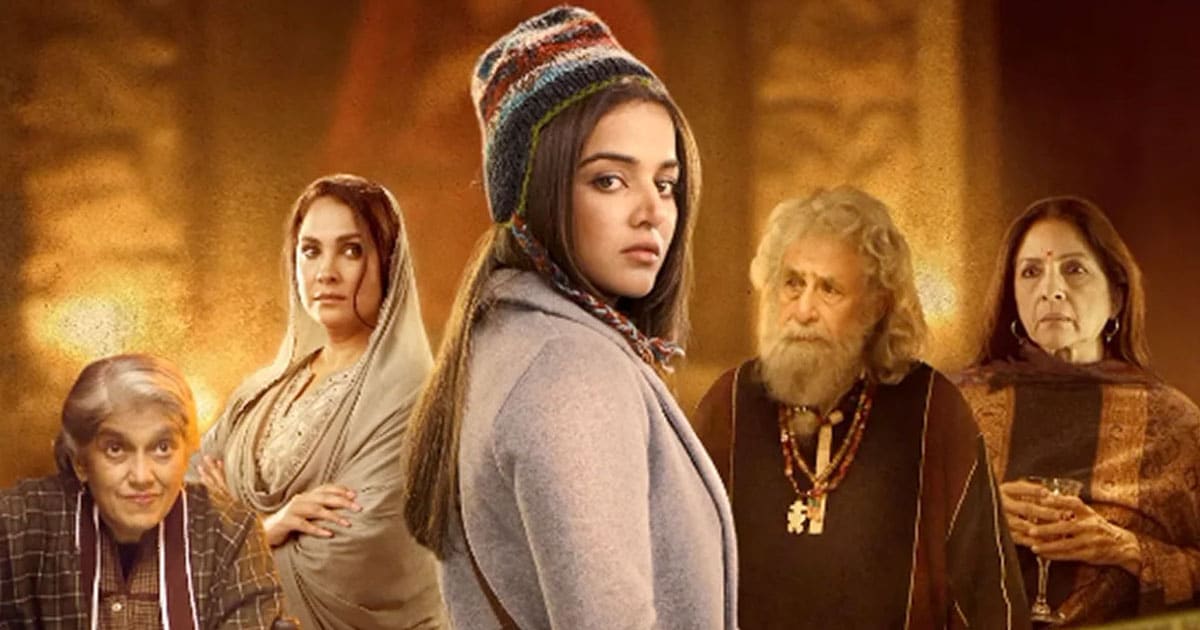I had high expectations when I dived into Vishal Bhardwaj’s latest venture, the adaptation of Agatha Christie’s classic tale, Charlie Chopra and The Mystery Of Solang Valley. This web series promised a blend of Indian flavor and Christie’s timeless mystery. While it delivers on some fronts, it falls short on others, leaving me with mixed feelings about this moody adaptation.

The Magnetic Wamiqa Gabbi
Let’s start with the undeniable highlight of the series – Wamiqa Gabbi’s performance. Gabbi, in her role as Charulata ‘Charlie’ Chopra, shines brilliantly. Her portrayal is nothing short of captivating. Gabbi effortlessly connects with the audience, bringing infectious charisma and charm to her character. Her ability to break the fourth wall and engage directly with viewers adds an intriguing layer to the narrative. She proves herself as a multifaceted talent, and her portrayal of Charlie is a compelling reason to watch this series. Her innate ability to balance the character’s happy-go-lucky persona with subtle emotional depth is a testament to her acting prowess.
Classic Christie Elements with a Twist
The story unfolds in the picturesque Solang Valley, Manali, where modernity meets the snow-covered landscapes, setting a visually appealing stage for the mystery to unravel. The narrative begins with a séance, a classic Christie touch. This opening scene, coupled with the eerie backdrop of the valley, instantly piques the viewer’s curiosity. The death of Brigadier Meherbaan Singh Rawat and the subsequent suspicion cast upon his nephew, Jimmy Nautiyal (played by Vivaan Shah), serve as the central plot.
The series, co-produced with Agatha Christie Limited, embraces many classic Christie tropes. One intriguing twist is Charlie’s habit of addressing the camera directly, reminiscent of Fleabag’s narrative style. While this adds a unique layer to the storytelling, it doesn’t quite achieve the level of depth and impact seen in Fleabag.
Narrative Shortcomings
Where Charlie Chopra and The Mystery Of Solang Valley falters is in its storytelling. The script, crafted by Vishal Bhardwaj, Jyotsna Hariharan, and Anjum Rajabali, struggles to build the suspense and layers required for a gripping murder mystery. One would expect a sense of thrill and excitement as a detective unravels a complex case, but it remains conspicuously absent. This is a missed opportunity, especially when considering the potential of the snow-covered Solang Valley as a backdrop for a chilling crime story.
Aesthetic Appeal
On a more positive note, the series is not without its merits. The cinematography, handled by Tassaduq Hussain, captures the enchanting beauty of Solang Valley with finesse. The visuals are nothing short of mesmerizing, creating an atmospheric allure that complements the narrative. Vishal Bhardwaj’s musical talents also shine through in the series, and Rekha Bhardwaj’s soulful renditions add depth to the experience. The aesthetics, both visual and auditory, are a definite asset to the show.
Promising Future
As the series concludes, it leaves us with a glimmer of hope for the future. The possibility of Charlie returning for another case is hinted at, suggesting that the creators have plans to address the series’ shortcomings. This is encouraging, and one can only anticipate that subsequent seasons will refine the storytelling and deliver a more gripping mystery.
Charlie Chopra and The Mystery Of Solang Valley is a valiant attempt at adapting Agatha Christie’s work to an Indian setting. It certainly has its moments, with Wamiqa Gabbi’s standout performance being the brightest among them. However, it falls short in terms of building the suspense and delivering the thrills expected from a classic murder mystery. While the series hints at a promising future, there’s definite room for improvement. If you’re a mystery aficionado or simply admire Gabbi’s talent, it’s worth giving this series a watch. But do so with the understanding that it may not provide the heart-pounding excitement that the genre often promises.
Charlie Chopra is now streaming on Sony LIV.

